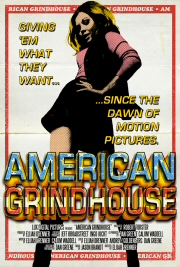As perhaps the most recognizable names behind the mumblecore movement, directors Mark and Jay Duplass have earned a small following over the years with festival favorites like “The Puffy Chair” and “Baghead.” Their newest film is a minor departure from the genre that put them on the map, but even though it has the backing of a major studio and features an A-list cast, “Cyrus retains the low-budget, independent spirit of their other movies. Mostly unscripted but not quite mumblecore, “Cyrus” may drive some longtime fans away, but this darkly comical look at the human condition is guaranteed to earn the Duplass brothers an entirely new audience.
John C. Reilly stars as John, a freelance editor who’s still getting over the divorce from his first wife, Jamie (Catherine Keener), even though it’s been seven years since they separated. Jamie is now engaged to her new boyfriend (Matt Walsh), but she’s remained friends with John over the years and invites him to a party one night in order to meet someone new. John begrudgingly agrees, and though the night doesn’t get off to a great start, he’s eventually approached by Molly (Marisa Tomei), a beautiful single who’s totally out of his league. Nevertheless, the two hit it off immediately and start a romance, but when John worries that Molly is hiding something from him, he follows her back home to find that there’s another man in her life – her 21-year-old son, Cyrus (Jonah Hill). Though Cyrus appears friendly enough at first, John soon realizes that the overly-attached mama’s body will do whatever it takes to break them up and keep Molly all to himself.

It’s a relationship that could have easily come across as creepy if the material didn’t have such a genuine quality to it. Granted, that doesn’t change the fact that it’s still hard to swallow at times, but the cast does a pretty good job of not focusing too much on the somewhat taboo nature of their bond by keeping the story flowing – particularly since all the dialogue is improvised. Marisa Tomei is easily the best actor of the bunch, but she’s a little out of her element here, relying mostly on her co-stars to guide her through each scene. John C. Reilly and Jonah Hill, on the other hand, have a real knack for comic improvisation, and it shows in their ability to constantly up the ante. Reilly is solid in his best role in years, delivering a performance that’s both funny and sweet, but it’s Hill’s semi-serious turn as the title character that will likely steal most of the limelight. It’s hardly worth all the fuss (he’s good, but not that good), but it’s still an interesting career move for an actor best known for comedies like “Superbad” and “Knocked Up.”
Even with its marquee talent, “Cyrus” is still very much a Duplass brothers film. Though it’s difficult to gauge how much they actually contributed to the story apart from writing the outline, their fingerprints are all over the final product – particularly the way in which it was shot, as if some of the more intimate moments are being recorded by a third party for some kind of bizarre documentary on Oedipus complex. These dramatic scenes are handled nicely by all involved, but without its dark, comedic undercurrent, “Cyrus” wouldn’t be nearly as enjoyable. And if the Duplass brothers can figure out a way to strike this perfect balance between drama and comedy (and to a lesser note, indie and mainstream) in every one of their films, their futures are going to be bright.





